
Raise your hand if you took up baking recently! Okay, sooo, that’s everyone.
It seems like lots of people are experimenting with ancient grains and other flour subs. But are they really healthier than white flour?
“Alternative flours can be used as substitutes for regular wheat flour if you have an allergy or intolerance to wheat flour, or if you just want to add more variety to your diet,” says Abby Langer, RD.
These flour alternatives are typically made with foods like almonds, coconut, bananas, or even beans, that are ground up to resemble the texture and consistency of flour. And Langer says they can add different nutrients (as well as slightly different flavors) to your cooking. “Almond flour, which is one of my favorites, has more protein than all-purpose wheat flour and gives a nutty flavor,” she says.
One thing to note: Since flour substitutes aren’t quite the same texture-wise as flour (duh), you usually can’t do a straight swap in gluten-free baking, Langer says. You might have to do a little math *shudders* to get that conversion right. “Research the substitution ratios for alternative flour before using it in a recipe that’s meant for regular flour,” Langer recommends. You’ll often find this information on the back of the package of alterna-flour you want to use.
These are the best flour alternatives, according to nutritionists.
White rice flour
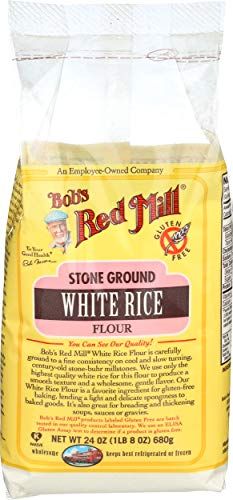
Gluten-free peeps, we got you! This flour is used to make rice noodles and mochi. (It also makes killer banana bread.) Or, use it for a clever GF breakfast swap: Next time you whip up a batch of pancakes, replace 1 cup of all-purpose with ⅞ cup of white rice flour for added magnesium on your plate.
Green banana flour
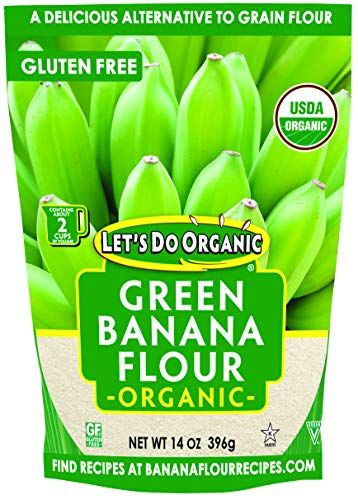
Before you ask, no, it won’t make your bread and cakes taste like bananas…that much. It’s made from ground green banana skins and flesh, which have a lower sugar content than the riper kind. (The fruity taste is minimized during the cooking process.) Plus, you’ll get loads of potassium: One cup of banana flour packs 99 percent of your daily needs. It’s also rich in soluble fiber, which is clutch for digestion.
Almond flour
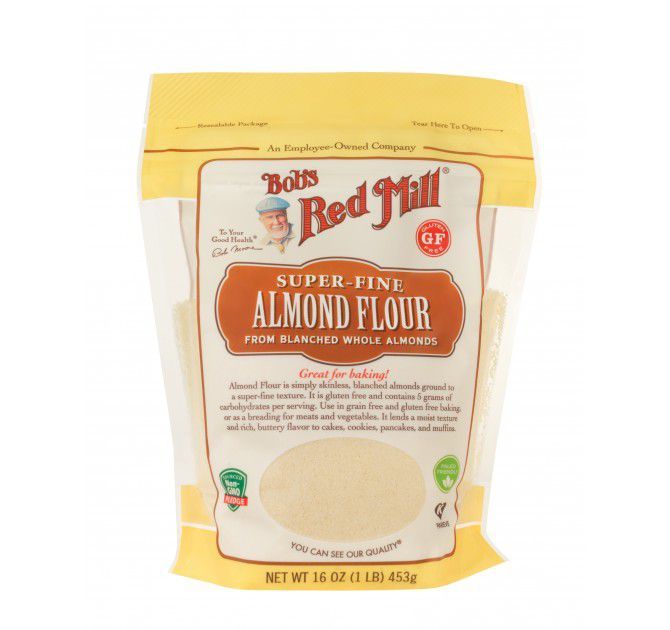
You’re already a fan of nut butters, now it’s time to give nut flour a go. When baking, sub in two cups of blanched flour for every one cup of white to score a nutty, sweet flavor that’s perfect for treats. It’s a solid source of calcium and magnesium (the latter helps you absorb the former). Use unblanched (meaning the skins haven’t been removed) for “breading” chicken or fish.
Coconut Flour
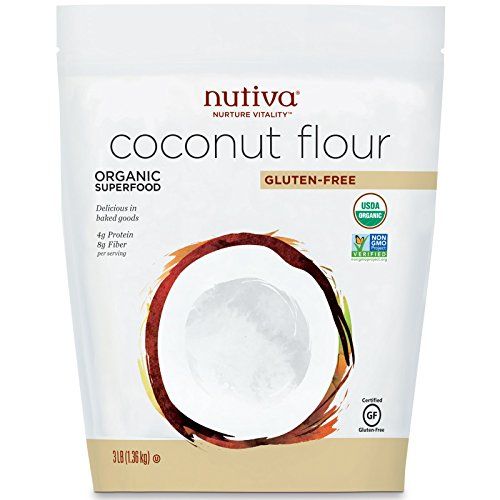
Fans of keto and paleo diets, rejoice! This slightly tropical tasting powder is lower on the glycemic index than white or even wheat flour, meaning it can help prevent your blood sugar from spiking and keep your appetite in check (read: free of hunger swings). Because it’s super absorbent, it will absorb more water in your bread dough, and may dry it out if you try to substitute it one-to-one for other flours. For example, you can bake a whole loaf of banana bread with just a half-cup of coconut flour, explains Desiree Nielsen, RD, author of Un-Junk Your Diet. She recommends looking for recipes that specifically list coconut flour.
Spelt flour
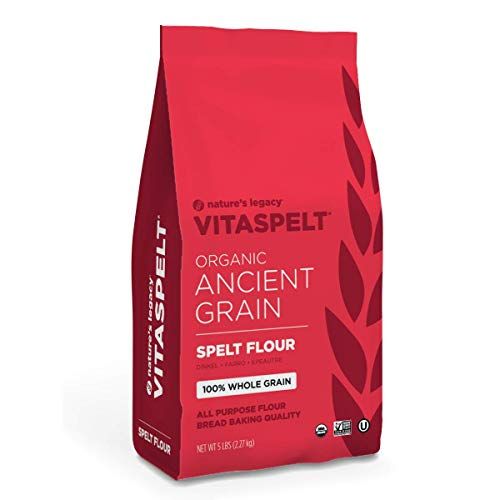
This ancient grain is a type of wheat, so it contains gluten, but fewer of the hard-to-digest carbs called fructans. As such, it’s a better option for those who avoid gluten but don’t have celiac disease. Unlike gluten-free flours, spelt offers a hearty and fibrous bite for doughy things like pizza crust.
Plantain flour
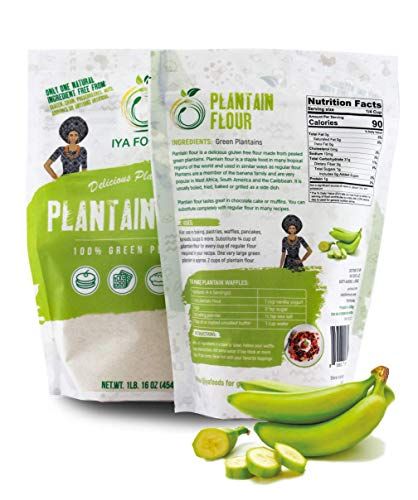
Banana’s cousin injects sweets like pancakes with a tangy, complex note. Plus, the flour substitute is higher in resistant starch than regular flour. This type of starch doesn’t totally break down in the body, so you feel fuller longer. Since it’s dense and grain-free, you may need a half teaspoon of baking soda for cakes to rise.
Chickpea flour

Protein-packed (about 28 grams per cup!) and high in fiber, this gluten-free powder stars in savory dishes thanks to an earthy flavor from its bean roots. Swap it in for white flour when you’re preparing meatballs or veggie burgers—all that protein makes for a super-strong food-binding agent.
Oat Flour

Made from ground oats, this flour has the same benefits as your morning bowl. Not only is this gluten-free flour high in iron, protein, and the brain-boosting mineral manganese, but it’s also loaded with soluble fiber—a.k.a. the real star here. That’s because soluble fiber (as opposed to reg fiber) forms into a “gel in the gut” that slows the rate at which nutrients are absorbed into the bloodstream, says Nielson. Soluble fiber also binds to cholesterol in the gut and helps carry the bad stuff out of your body. The result? Lower cholesterol and more stable blood sugars.
Plus, anti-inflammatory sugars found in oats, called beta-glucans, are a form of soluble fiber that slows digestion, helping you feel fuller longer.Those beta- glucans also show your gut some love by assisting in regulating the gut microbiome (that healthy balance of bacteria in the gut), according to research published in the Journal of Nutritional Biochemistry.
Just swap in 1⅓ cup of it for every 1 cup of regular flour.
Rye Flour

Like spelt, this flour substitute contains lower levels of gluten, making it a better choice for those with sensitivities (but not celiac disease). More good news? It’s an easy one-to-one swap for regular flour and has a rich and slightly sweet taste that does wonders in cookies, pancakes, or muffins.
Millet Flour
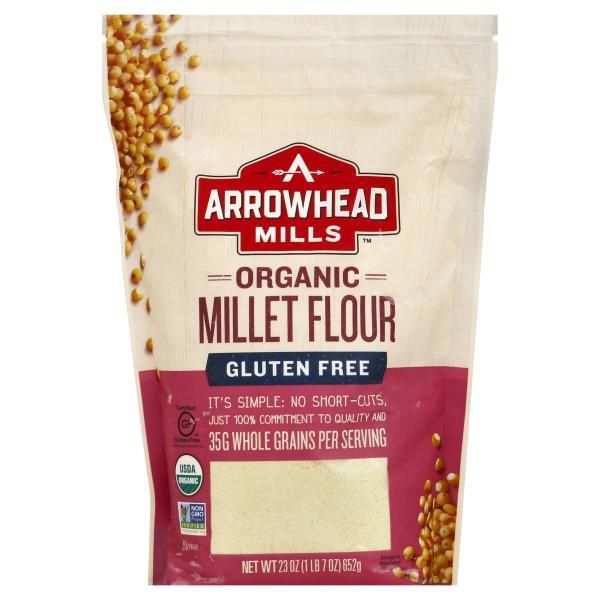
Millet flour is rich in energizing nutrients such as iron and B vitamins thiamine and riboflavin, Nielsen explains. It also plays well with other ingredients, meaning it has a neutral flavor that blends nicely with gluten-free panko crumbs (1:1 ratio) to create a cornmeal-like texture for coating anything from chicken and tofu to asparagus.
Quinoa Flour
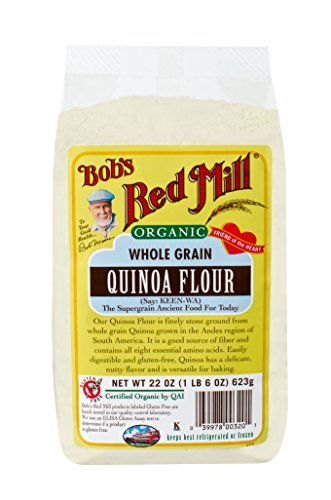
You may love creating nutrient-rich grain bowls with quinoa at the base, but have you ever considered using this grain as a flour substitute? Chances are, you already know how nutritious this grain is (it’s one of the few plant-based complete proteins!), and the flour version is no different. Quinoa is packed with protein, fiber, iron, and magnesium. Plus, the ancient grain has a low glycemic index, which means it will keep your blood sugar in check, and your heart healthy.
It has a nice nutty flavor, which is great for gluten-free baking, as well as both sweet or savory cooking.Try using half all-purpose flour and half quinoa flour to ease into it and avoid digestive upset from too much fiber…or with baked desserts, go all the way and sub it completely.
Buckwheat Flour
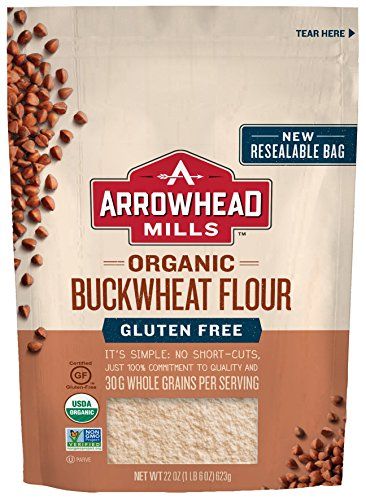
While its name may imply otherwise, buckwheat isn’t actually wheat. It’s a pseudocereal, a plant that produces seeds and isn’t technically a “grain,” but is consumed like a grain. That makes it totally gluten-free, too. This flour substitute is also a great source of fiber and essential amino acids, the building blocks of proteins, that are key for muscle repair.Buckwheat’s known for classic recipes like buckwheat noodles and crepes, but it also makes for an easy one-to-one swap for wheat flour in gluten-free baking.
Amaranth Flour
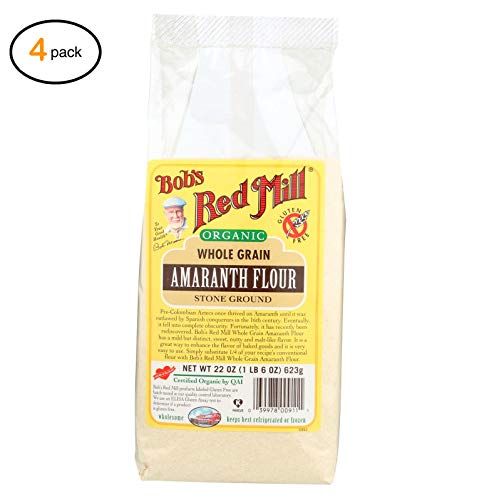
Like its super-grain cousin quinoa, amaranth packs all kinds of perks. “It has more calcium, magnesium, iron, carotenoids, and fiber than most vegetables or grains,” Sonya Angelone previously told Women’s Health. It’s also one of the most protein-packed grains, with over 9 grams per cup, and contains vitamin C and 22 percent of the recommended daily allowance of vitamin B6.
In its flour form, amaranth adds a slightly sweet, nutty, earthy, and malt-like flavor that’s great in baked goods. On their website, Bob’s Redmill says amaranth flour works well as part of a blend, especially in bread dough. And you can use it in cookies, savory crackers, or even amaranth tortillas.
Portions of this article originally appeared in the October 2018 and May 2021 issues of Women’s Health. For more great advice, pick up a copy of the issue on newsstands now.

Source: Read Full Article